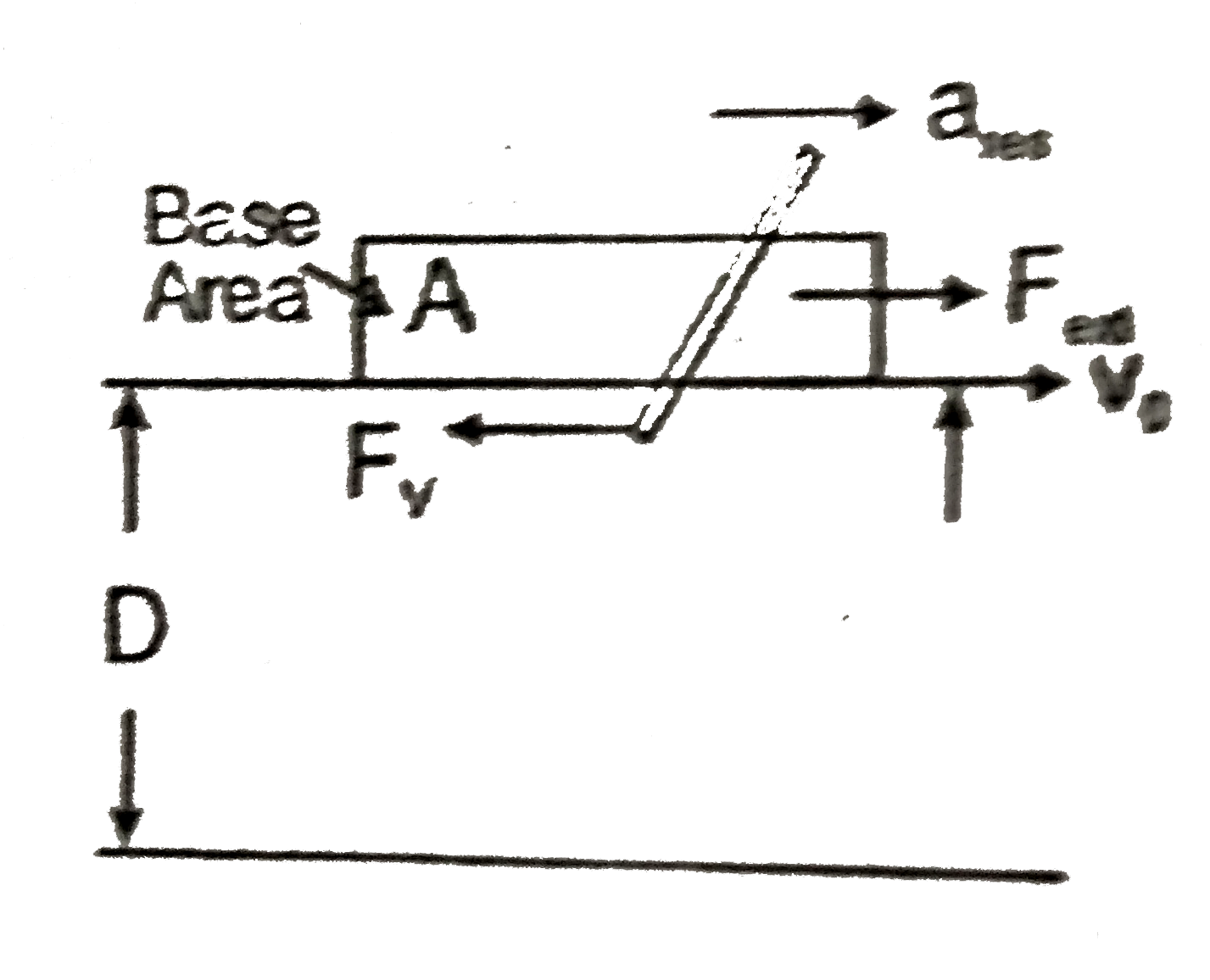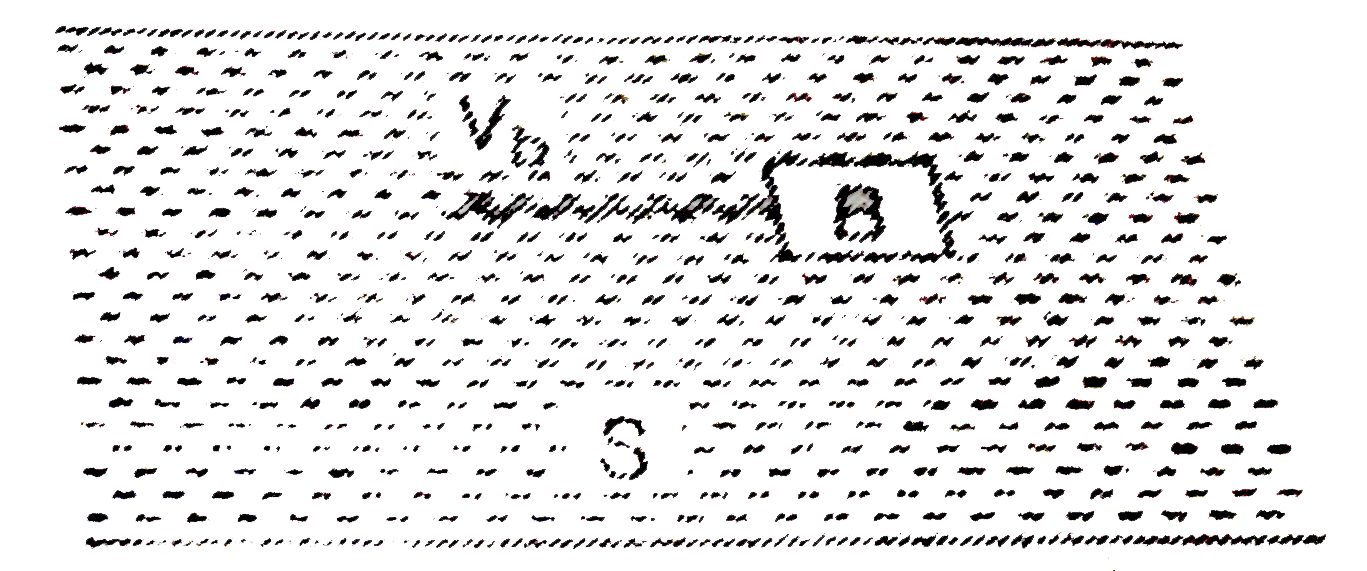A man is rowing a boat with a constant velocity v0 in a river. The contact area of boat is 'A' and coefficient of viscosity is η. The depth of river is 'D' . Find the force required to row the boat.
Fext−Fv=mares
As boat moves with constant velocity ares=0
But Fv=ηAdvdz,butdvdz=v0−0D=v0D
then Fext=Fv=ηAv0D

Topper's Solved these Questions
- BOOK - RESONANCE ENGLISHCHAPTER - DAILY PRACTICE PROBLEMSEXERCISE - dpp 92 illustration2videos
DAILY PRACTICE PROBLEMS
- BOOK - RESONANCE ENGLISHCHAPTER - DAILY PRACTICE PROBLEMSEXERCISE - dpp 90 Illustration2videos
DAILY PRACTICE PROBLEMS
- BOOK - RESONANCE ENGLISHCHAPTER - CURRENT ELECTRICITYEXERCISE - Exercise53videos
CURRENT ELECTRICITY
- BOOK - RESONANCE ENGLISHCHAPTER - ELASTICITY AND VISCOCITYEXERCISE - Advanced Level Problems9videos
ELASTICITY AND VISCOCITY
Similar Questions
A man starts rowing his stationary cuboidal boat of base area A=10m2. The driving force on the boat due to rowing is 100N in the direction of motion. Find the maximum velocity that the boat can achieve. Also find the time in which he will attain half of this maximum velocity. [ Take coefficient of viscosity of water =15 poise ] The depth of the lake is 10m and the combined mass of man and the boat to be 150kg.(u=0, velocity gradient uniform)
View SolutionA boat moves perpendicular to the bank with a velocity of 7.2 km/h. The current carries it 150 m downstream, find the velocity of the current. (The width of the river is 0.5 km).
View SolutionThe current velocity of river grows in proportion to the distance from its bank and reaches the maximum value v0 in the middle. Near the banks the velocity is zero. A boat is moving along the river in such a manner that the boatman rows his boat always perpendicular to the current. The speed of the boat in still water is u. Find the distance through which the boat crossing the river will be carried away by the current, if the width of the river is c. Also determine the trajectory of the boat.
View SolutionA man of mass m walks from end A to the other end B of a boat of mass M and length l. The coefficient of friction between the man and the boat is μ an neglect any resistive force between the boat and the water.
View SolutionA motor boat of mass m moves along a lake with velocity V0. At the moment t=0 the engine of the boat is shut down. Assuming the resistance of water is proportional to the velocity of the boat →F=−r→v
Q. The velocity (v) of the motor boat as a function of the distance (s) covered with the shutdown engine isView SolutionA motor boat of mass m moves along a lake with velocity V0. At the moment t=0 the engine of the boat is shut down. Assuming the resistance of water is proportional to the velocity of the boat →F=−r→v
Q. How long the motor boat with the shut down engine.View SolutionA river is flowing towards with a velocity of 5ms−1. The boat velocity is 10ms−1. The boat crosses the river by shortest path. Hence,
View SolutionA river is flowing towards with a velocity of 5ms−1. The boat velocity is 10ms−1. The boat crosses the river by shortest path. Hence,
View SolutionA boat 'B' is moving upstream with velocity 3m/s with respect to ground. An observer standing on the boat observes that a swimmer 'S' is crossing the river perpendicular to the direction of motion of the boat. If river flow velocity is 4m/s and swimmer crosses the river of width 100,m is 50s. Then
 View Solution
View SolutionA man rows a boat with a speed of 18 km/hr in northwest direction. The shoeline makes an angle of 15∘ south of west. Obtain the component of the velocity of the boat along the shoreline:
View Solution

